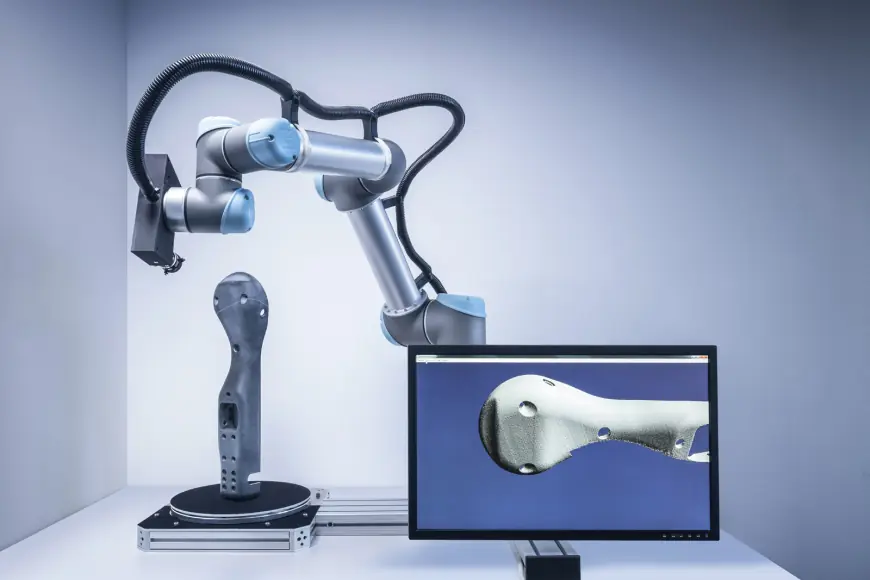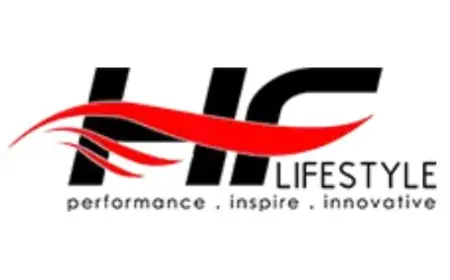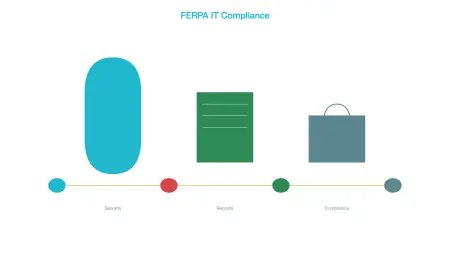3D Scanning Market Innovation Trends & Industry Outlook 2025–2033
The global 3D scanning market size reached USD 7.2 Billion in 2024. Looking forward, IMARC Group expects the market to reach USD 14.1 Billion by 2033, exhibiting a growth rate (CAGR) of 7.32% during 2025-2033.

IMARC Group’s latest research report, titled “3D Scanning Market Report by Type (Hardware, Software), Range (Short Range, Medium Range, Long Range), Application (Reverse Engineering, Rapid Prototyping, Quality Control/Inspection, Face and Body Scanning, and Others), End Use Industry (Aerospace and Defense, Automotive, Healthcare, Manufacturing, Media and Entertainment, Architecture and Construction, and Others), and Region 2025-2033,” offers a comprehensive analysis of the 3D Scanning Market share. the report also includes competitor and regional analysis, along with a breakdown of segments within the industry. the global 3D scanning market size reached USD 7.2 Billion in 2024. Looking forward, IMARC Group expects the market to reach USD 14.1 Billion by 2033, exhibiting a growth rate (CAGR) of 7.32% during 2025-2033.
Get Free Sample Copy of Report at – https://www.imarcgroup.com/3d-scanning-market/requestsample
Increasing Demand Across Industry Verticals for Precision and Efficiency:
The 3D scanning market is experiencing robust growth, fueled by rising demand across various industry verticals that require high precision, accuracy, and operational efficiency. Sectors such as automotive, aerospace, manufacturing, healthcare, architecture, and cultural heritage preservation are increasingly leveraging 3D scanning technologies to streamline workflows and improve output quality. In automotive and aerospace, for instance, 3D scanners are widely used for reverse engineering, quality inspection, and prototyping, enabling the production of highly accurate parts and assemblies while reducing development time and costs. In healthcare, 3D scanning plays a vital role in creating customized prosthetics, dental implants, and orthotic devices tailored to individual patient anatomies. Furthermore, architects and civil engineers utilize 3D laser scanning for building information modeling (BIM), structural analysis, and restoration projects. These industry applications demonstrate the versatility and critical importance of 3D scanning in driving digital transformation. As the demand for real-time data capture, high-resolution imaging, and precise measurements increases, 3D scanning technologies are becoming an integral part of digital workflows, fostering innovation and operational agility across sectors.
Technological Advancements in Hardware and Software Integration:
The evolution of 3D scanning technology has been significantly accelerated by continuous advancements in hardware and software integration, which are collectively enhancing scanning speed, resolution, and user experience. High-performance scanners now incorporate features such as multi-axis scanning, blue light and laser triangulation, and structured light technology, allowing for the capture of intricate geometries and textures with remarkable accuracy. Meanwhile, software innovations are enabling real-time rendering, automated post-processing, and seamless integration with CAD, CAM, and 3D printing platforms. These capabilities not only improve the accuracy and fidelity of digital replicas but also reduce time-consuming manual interventions. Additionally, the emergence of AI-powered scanning software is revolutionizing the user interface, providing intelligent recommendations, error detection, and adaptive scanning parameters based on object type and environmental conditions. The convergence of hardware and software is making 3D scanning more accessible and scalable, even for small and medium enterprises. This technological synergy is crucial for expanding market adoption, as it lowers entry barriers, enhances efficiency, and unlocks new use cases that were previously limited by technical or financial constraints.
Growing Integration in Consumer Applications and Digital Ecosystems:
Beyond industrial and enterprise-grade usage, the 3D scanning market is witnessing a notable shift toward consumer applications and broader digital ecosystem integration. With the proliferation of smartphones equipped with LiDAR sensors and depth-sensing cameras, 3D scanning is gradually becoming mainstream among general users. This accessibility is opening up new avenues in e-commerce, gaming, virtual reality (VR), augmented reality (AR), and social media. Consumers can now create accurate 3D models of objects, faces, and environments using mobile devices, leading to personalized experiences in virtual try-ons, 3D avatars, home design, and content creation. E-commerce platforms are leveraging this technology to provide immersive product visualization, reducing return rates and improving buyer confidence. Meanwhile, integration with AR/VR ecosystems is enabling enhanced simulation, training, and entertainment experiences, particularly in education, retail, and interior design. As digital content creation becomes increasingly important in the metaverse and Web 3.0 environments, the role of 3D scanning as a foundational technology will continue to expand. This dynamic reflects a shift from niche industrial tool to an essential component of next-generation digital interaction and consumer engagement.
Leading Key Players Operating in the 3D Scanning Industry:
- 3D Systems Inc.
- Artec 3D
- Autodesk Inc.
- Creaform Inc. (AMETEK Inc.)
- CyberOptics Corporation
- Faro Technologies Inc.
- Hexagon AB
- Jenoptik AG
- Nikon Corporation
- Topcon Corporation
- Trimble Inc
- ZEISS Group
3D Scanning Market Trends:
The 3D scanning market is being reshaped by a series of transformative trends that reflect broader shifts in technology, user behavior, and industry needs. One of the most prominent trends is the miniaturization and affordability of 3D scanning devices, which are making the technology more accessible to a wider range of users—from large enterprises to small businesses and even individual creators. Simultaneously, the growing demand for digitization in industries such as construction, manufacturing, and healthcare is driving the adoption of 3D scanning for applications like digital twins, precision diagnostics, and predictive maintenance. Cloud-based platforms are also influencing the market, enabling real-time data sharing, remote collaboration, and seamless integration with design and analysis tools. Moreover, the increasing importance of immersive technologies like augmented reality and virtual reality is pushing the need for high-quality 3D content, which in turn is spurring demand for accurate and fast 3D scanning solutions. Sustainability and resource optimization are additional forces encouraging the use of 3D scanning for reducing material waste and improving process efficiency. Together, these trends point to a future where 3D scanning is central to intelligent design, smart manufacturing, and digitally enhanced user experiences.
Browse Full Report With TOC: https://www.imarcgroup.com/3d-scanning-market
3D Scanning Market Report Segmentation:
Breakup by Type:
- Hardware
- Optical Scanners
- Structured Light Scanners
- Laser Scanners
- Others
- Software
Breakup by Range:
- Short Range
- Medium Range
- Long Range
Breakup by Application:
- Reverse Engineering
- Rapid Prototyping
- Quality Control/Inspection
- Face and Body Scanning
- Others
Breakup by End Use Industry:
- Aerospace and Defense
- Automotive
- Healthcare
- Manufacturing
- Media and Entertainment
- Architecture and Construction
- Others
Breakup by Region:
- North America (United States, Canada)
- Asia Pacific (China, Japan, India, Australia, Indonesia, Korea, Others)
- Europe (Germany, France, United Kingdom, Italy, Spain, Others)
- Latin America (Brazil, Mexico, Others)
- Middle East and Africa (United Arab Emirates, Saudi Arabia, Qatar, Iraq, Other)
Key Highlights of the Report:
- Market Performance (2019-2024)
- Market Outlook (2025-2033)
- Porter’s Five Forces Analysis
- Market Drivers and Success Factors
- SWOT Analysis
- Value Chain
- Comprehensive Mapping of the Competitive Landscape
About Us:
IMARC Group is a leading market research company that offers management strategy and market research worldwide. We partner with clients in all sectors and regions to identify their highest-value opportunities, address their most critical challenges, and transform their businesses.
IMARC’s information products include major market, scientific, economic and technological developments for business leaders in pharmaceutical, industrial, and high technology organizations. Market forecasts and industry analysis for biotechnology, advanced materials, pharmaceuticals, food and beverage, travel and tourism, nanotechnology and novel processing methods are at the top of the company’s expertise.
Contact Us:
IMARC Group
134 N 4th St. Brooklyn, NY 11249, USA
Email: [email protected]
Tel No:(D) +91 120 433 0800
United States: +1-631-791-1145
What's Your Reaction?
 Like
0
Like
0
 Dislike
0
Dislike
0
 Love
0
Love
0
 Funny
0
Funny
0
 Angry
0
Angry
0
 Sad
0
Sad
0
 Wow
0
Wow
0




















































